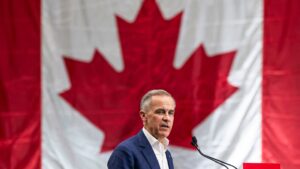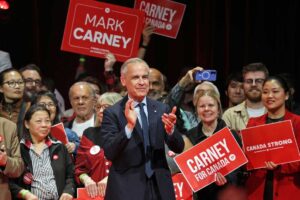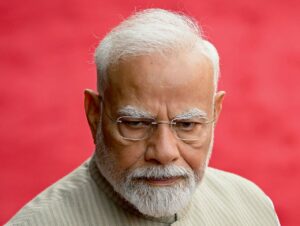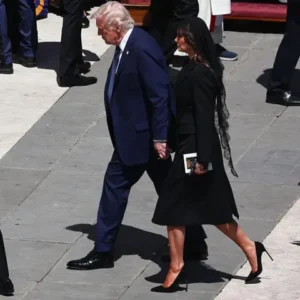Mark Carney Leads Liberals to Victory in Canadian Election
The 2025 Canadian federal election has captured international attention, with search interest in “Canadian election results” surging to 200,000 queries in the US alone. The historic vote marks a significant political shift as Mark Carney, former Governor of the Bank of Canada and Bank of England, leads the Liberal Party to victory, succeeding Justin Trudeau as Prime Minister. This election outcome carries profound implications for Canada’s domestic policies and its relationship with the United States under Donald Trump’s administration.
A New Era Under Mark Carney
Mark Carney’s ascent to Prime Minister represents a dramatic turn in Canadian politics. The economist and central banker, who entered politics only recently, managed to unite progressive voters while appealing to centrists concerned about economic stability. According to The New York Times, Carney’s victory speech emphasized national unity and economic renewal, promising to address income inequality while maintaining fiscal responsibility. His background in global finance appears to have reassured markets during a turbulent geopolitical climate.

Mark Carney’s ascent to Prime Minister represents a dramatic turn in Canadian po…
Trump Factor in the Canadian Election
One of the most striking aspects of this election has been how Donald Trump’s influence shaped the campaign. As reported by NPR, Carney directly addressed the “Trump factor” in his victory speech, warning that “Trump is trying to break us” while vowing to protect Canadian interests. The BBC highlights Carney’s pledge to deal with the U.S. administration “on our terms,” signaling a more assertive Canadian foreign policy approach. This stance appears to have resonated with voters concerned about maintaining sovereignty amid growing American protectionism.
Read also: https://spyrot.com/canadas-2025-election-results-mark-carney-leads-liberals-to-victory//
What This Means for Justin Trudeau
The election marks the end of Justin Trudeau’s nearly decade-long leadership of Canada. While Trudeau remains a prominent Liberal figure, his decision not to seek re-election paved the way for Carney’s rise. Analysts suggest Trudeau’s declining popularity, particularly in Western Canada, made party renewal necessary. The Liberal victory under new leadership suggests Canadians wanted continuity in progressive policies but with fresh leadership to implement them.
Key Issues That Decided the Election
Several critical factors influenced the election outcome. Housing affordability emerged as a top concern, with Carney proposing ambitious plans to increase supply while protecting renters. Climate policy also played a major role, with the Liberals promising to accelerate Canada’s transition to renewable energy. Perhaps most significantly, economic anxiety about U.S. trade policies pushed many voters toward Carney’s economic expertise. His background in navigating the 2008 financial crisis gave him unique credibility on these issues.
How Elections Canada Managed the Vote
With high voter turnout reported across the country, Elections Canada successfully administered what appears to be a smooth electoral process. The agency’s website became a primary source for real-time results, with “elections canada election results” among the top related search queries. The election saw increased use of advanced polling and mail-in ballots, continuing trends from previous elections. Initial reports suggest these measures improved accessibility while maintaining electoral integrity.
International Reaction to Canada’s New Government
Global leaders have begun reacting to Canada’s election results. European allies have expressed optimism about working with Carney on climate initiatives, while Asian trade partners are watching his approach to Pacific trade agreements. The most scrutinized reaction will undoubtedly come from Washington, where the Trump administration must now negotiate with a Canadian leader who has vowed to be “firm but pragmatic” in bilateral relations. Carney’s deep understanding of global finance may give Canada new leverage in these discussions.
What Comes Next for Canada
As the Carney government prepares to take office, several immediate challenges loom. Reconciling climate ambitions with economic growth, addressing housing shortages, and navigating U.S. relations will dominate the early agenda. The new Prime Minister has promised to assemble a cabinet that reflects Canada’s diversity while bringing technical expertise to these complex issues. With a clear mandate but significant challenges ahead, all eyes remain on how this new chapter in Canadian politics will unfold.







